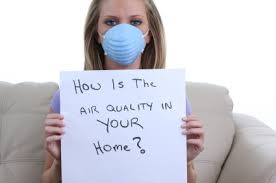Moisture and Mold Problems
Molds are part of the natural environment, and can be found everywhere, indoors and outdoors. Mold is not usually a problem, unless it begins growing indoors. The best way to control mold growth is to control moisture. This website provides guidance about mold and moisture for homes, schools, multifamily and commercial buildings.
Mold spores are everywhere. No matter how clean your home is, they come in on the breeze. They are very hardy and just need an opportunity to grow. That opportunity comes when water enters the home.

Whether you have had a flood in your home, leaky pipes under your sink or areas where poor air circulation leads to high humidity, mold can be the result. Rush Services, Inc. can help you detect mold, determine what kind it is, remove it and help you keep it from coming back.
Understanding Mold
Microscopic mold spores exist almost everywhere, outdoors and indoors, making it impossible to remove all mold from a home or business. Some restoration businesses advertise “mold removal” and even guarantee to remove all mold, which is a fallacy. Consider the following mold facts:
- Mold is present almost everywhere, indoors and outdoors.
- Mold spores are microscopic and float along in the air, and may enter your home through windows, doors, or AC/heating systems or even hitch a ride indoors on your clothing or on a pet.
- Mold spores thrive on moisture. Mold spores can quickly grow into colonies when exposed to water.
- Before mold remediation can begin, any sources of water or moisture must be addressed. Otherwise, the mold may return.
- Mold often produces a strong, musty odor and can lead you to possible mold problem areas.
- Even higher-than-normal indoor humidity can support mold growth. Keep indoor humidity below 45 percent.
Why is mold growing in my home?
Mold growing outdoors on firewood. Molds come in many colors; both white and black molds are shown here.
Molds are part of the natural environment. Outdoors, molds play a part in nature by breaking down dead organic matter such as fallen leaves and dead trees, but indoors, mold growth should be avoided. Molds reproduce by means of tiny spores; the spores are invisible to the naked eye and float through outdoor and indoor air. Mold may begin growing indoors when mold spores land on surfaces that are wet. There are many types of mold, and none of them will grow without water or moisture.
Can mold cause health problems?
Molds are usually not a problem indoors, unless mold spores land on a wet or damp spot and begin growing. Molds have the potential to cause health problems. Molds produce allergens (substances that can cause allergic reactions), irritants, and in some cases, potentially toxic substances (mycotoxins). Inhaling or touching mold or mold spores may cause allergic reactions in sensitive individuals. Allergic responses include hay fever-type symptoms, such as sneezing, runny nose, red eyes, and skin rash (dermatitis).
Allergic reactions to mold are common. They can be immediate or delayed. Molds can also cause asthma attacks in people with asthma who are allergic to mold. In addition, mold exposure can irritate the eyes, skin, nose, throat, and lungs of both mold-allergic and non-allergic people. Symptoms other than the allergic and irritant types are not commonly reported as a result of inhaling mold. Research on mold and health effects is ongoing.
This [guidance] provides a brief overview; it does not describe all potential health effects related to mold exposure. For more detailed information consult a health professional. You may also wish to consult your state or local health department.
How do molds affect people?
Molds are usually not a problem indoors, unless mold spores land on a wet or damp spot and begin growing. Molds have the potential to cause health problems. Molds produce allergens (substances that can cause allergic reactions) and irritants. Inhaling or touching mold or mold spores may cause allergic reactions in sensitive individuals. Allergic responses include hay fever-type symptoms, such as sneezing, runny nose, red eyes, and skin rash.
Allergic reactions to mold are common. They can be immediate or delayed. Molds can also cause asthma attacks in people with asthma who are allergic to mold. In addition, mold exposure can irritate the eyes, skin, nose, throat, and lungs of both mold-allergic and non-allergic people. Symptoms other than the allergic and irritant types are not commonly reported as a result of inhaling mold. Research on mold and health effects is ongoing.
The above does not describe all potential health effects related to mold exposure. For more detailed information consult a health professional, your state or local health department, or the Centers for Disease Control and Prevention mold website.
